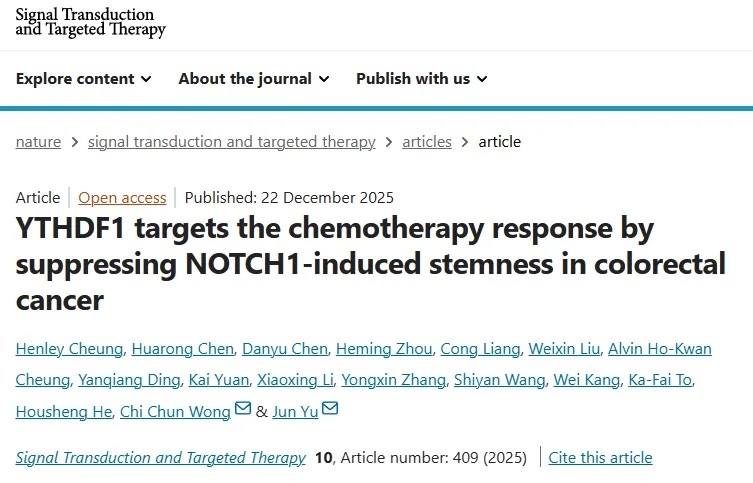Nano Lett.:是银离子而不是纳米颗粒杀死细菌
| 导读 | <p align="center"><img src="http://www.bioon.com/biology/UploadFiles/201207/2012072222471636.gif" alt="" width="185" height="185" border=&quo... |
<p align="center"><img src="http://www.bioon.com/biology/UploadFiles/201207/2012072222471636.gif" alt="" width="185" height="185" border="0" /></p>
人们对银纳米颗粒杀死细菌的机制存在长期争论。科学家们早就知道当银纳米颗粒被氧化时,从中释放出来的银离子对细菌致命性的。但是科学家们也一直猜测银纳米颗粒本身可能对细菌是有毒性的,特别是就它们当中直径最小的(大约为3纳米)而言。如今,美国莱斯大学研究人员解决了这一争论:纳米颗粒不能杀死细菌。相关研究结果于2012年发表在<em>Nano Letters</em>期刊上。
<!--more-->
解决这种长期争论的最直接方法就是证实将银纳米颗粒与细菌直接接触时不溶性的银纳米颗粒不能杀死细菌,而当与细菌靠近时,通过氧化银纳米颗粒而产生的可溶性银离子能够杀死。
为此,论文第一作者Zongming Xiu着手测试市场上能够买到的和定制合成的纳米颗粒(直径在3到11纳米).以便观察纳米颗粒大小与毒性之间是否存在关联。但是,研究人员并没有获得一致性的结果。为此,Xu决定在厌氧环境---该环境能够消除氧化发生的可能性,因而能够控制银离子释放---中测试纳米颗粒毒性。他发现,经过过滤的纳米颗粒对细菌的毒性要比银离子小很多。
他们发现纳米颗粒即便浓度高达195ppm(part per million, ppm, 即百万分之一),仍然对细菌没有毒性,但是就银离子而言,大约15ppm就能杀死所有存在的细菌。这表明纳米颗粒的毒性要比银离子小7665倍,因而可以忽略不计。
在测试中,研究人员也证实存在毒物兴奋效应(hormesis):当大肠杆菌接触到剂量太少而不能杀死它们的银离子时,它们因遭受刺激而变得兴奋起来。这意味着使用的剂量要充足,否则细菌也变得更加强大。
这些发现提示着人们可能能够提高银纳米颗粒在抗菌方面的应用,同时可以通过给它们加上反应性聚合物包被来调控银离子释放速率从而减轻银离子对环境造成的影响。
本文编译自<a href="http://phys.org/news/2012-07-ions-particles-silver-toxic-bacteria.html" target="_blank">Ions, not particles, make silver toxic to bacteria</a>
<div id="ztload">
<div>
<div>
<img src="http://www.bioon.com/biology/UploadFiles/201207/2012072222462053.jpg" alt="" width="113" height="149" border="0" />
<a title="" href="http://dx.doi.org/10.1021/nl301934w" target="_blank">doi: 10.1021/nl301934w</a>
PMC:
PMID:
</div>
<div>
<br/><strong>Negligible Particle-Specific Antibacterial Activity of Silver Nanoparticles</strong><br/>
Zong-ming Xiu†, Qing-bo Zhang‡, Hema L. Puppala‡, Vicki L. Colvin‡, and Pedro J. J. Alvarez
For nearly a decade, researchers have debated the mechanisms by which AgNPs exert toxicity to bacteria and other organisms. The most elusive question has been whether the AgNPs exert direct “particle-specific” effects beyond the known antimicrobial activity of released silver ions (Ag+). Here, we infer that Ag+ is the definitive molecular toxicant. We rule out direct particle-specific biological effects by showing the lack of toxicity of AgNPs when synthesized and tested under strictly anaerobic conditions that preclude Ag(0) oxidation and Ag+ release. Furthermore, we demonstrate that the toxicity of various AgNPs (PEG- or PVP- coated, of three different sizes each) accurately follows the dose–response pattern of E. coli exposed to Ag+ (added as AgNO3). Surprisingly, E. coli survival was stimulated by relatively low (sublethal) concentration of all tested AgNPs and AgNO3 (at 3–8 μg/L Ag+, or 12–31% of the minimum lethal concentration (MLC)), suggesting a hormetic response that would be counterproductive to antimicrobial applications. Overall, this work suggests that AgNP morphological properties known to affect antimicrobial activity are indirect effectors that primarily influence Ag+ release. Accordingly, antibacterial activity could be controlled (and environmental impacts could be mitigated) by modulating Ag+ release, possibly through manipulation of oxygen availability, particle size, shape, and/or type of coating.
<br/>来源:生物谷
</div>
</div>
</div>
人们对银纳米颗粒杀死细菌的机制存在长期争论。科学家们早就知道当银纳米颗粒被氧化时,从中释放出来的银离子对细菌致命性的。但是科学家们也一直猜测银纳米颗粒本身可能对细菌是有毒性的,特别是就它们当中直径最小的(大约为3纳米)而言。如今,美国莱斯大学研究人员解决了这一争论:纳米颗粒不能杀死细菌。相关研究结果于2012年发表在<em>Nano Letters</em>期刊上。
<!--more-->
解决这种长期争论的最直接方法就是证实将银纳米颗粒与细菌直接接触时不溶性的银纳米颗粒不能杀死细菌,而当与细菌靠近时,通过氧化银纳米颗粒而产生的可溶性银离子能够杀死。
为此,论文第一作者Zongming Xiu着手测试市场上能够买到的和定制合成的纳米颗粒(直径在3到11纳米).以便观察纳米颗粒大小与毒性之间是否存在关联。但是,研究人员并没有获得一致性的结果。为此,Xu决定在厌氧环境---该环境能够消除氧化发生的可能性,因而能够控制银离子释放---中测试纳米颗粒毒性。他发现,经过过滤的纳米颗粒对细菌的毒性要比银离子小很多。
他们发现纳米颗粒即便浓度高达195ppm(part per million, ppm, 即百万分之一),仍然对细菌没有毒性,但是就银离子而言,大约15ppm就能杀死所有存在的细菌。这表明纳米颗粒的毒性要比银离子小7665倍,因而可以忽略不计。
在测试中,研究人员也证实存在毒物兴奋效应(hormesis):当大肠杆菌接触到剂量太少而不能杀死它们的银离子时,它们因遭受刺激而变得兴奋起来。这意味着使用的剂量要充足,否则细菌也变得更加强大。
这些发现提示着人们可能能够提高银纳米颗粒在抗菌方面的应用,同时可以通过给它们加上反应性聚合物包被来调控银离子释放速率从而减轻银离子对环境造成的影响。
本文编译自<a href="http://phys.org/news/2012-07-ions-particles-silver-toxic-bacteria.html" target="_blank">Ions, not particles, make silver toxic to bacteria</a>
<div id="ztload">
<div>
<div>
<img src="http://www.bioon.com/biology/UploadFiles/201207/2012072222462053.jpg" alt="" width="113" height="149" border="0" />
<a title="" href="http://dx.doi.org/10.1021/nl301934w" target="_blank">doi: 10.1021/nl301934w</a>
PMC:
PMID:
</div>
<div>
<br/><strong>Negligible Particle-Specific Antibacterial Activity of Silver Nanoparticles</strong><br/>
Zong-ming Xiu†, Qing-bo Zhang‡, Hema L. Puppala‡, Vicki L. Colvin‡, and Pedro J. J. Alvarez
For nearly a decade, researchers have debated the mechanisms by which AgNPs exert toxicity to bacteria and other organisms. The most elusive question has been whether the AgNPs exert direct “particle-specific” effects beyond the known antimicrobial activity of released silver ions (Ag+). Here, we infer that Ag+ is the definitive molecular toxicant. We rule out direct particle-specific biological effects by showing the lack of toxicity of AgNPs when synthesized and tested under strictly anaerobic conditions that preclude Ag(0) oxidation and Ag+ release. Furthermore, we demonstrate that the toxicity of various AgNPs (PEG- or PVP- coated, of three different sizes each) accurately follows the dose–response pattern of E. coli exposed to Ag+ (added as AgNO3). Surprisingly, E. coli survival was stimulated by relatively low (sublethal) concentration of all tested AgNPs and AgNO3 (at 3–8 μg/L Ag+, or 12–31% of the minimum lethal concentration (MLC)), suggesting a hormetic response that would be counterproductive to antimicrobial applications. Overall, this work suggests that AgNP morphological properties known to affect antimicrobial activity are indirect effectors that primarily influence Ag+ release. Accordingly, antibacterial activity could be controlled (and environmental impacts could be mitigated) by modulating Ag+ release, possibly through manipulation of oxygen availability, particle size, shape, and/or type of coating.
<br/>来源:生物谷
</div>
</div>
</div>
 腾讯登录
腾讯登录
还没有人评论,赶快抢个沙发